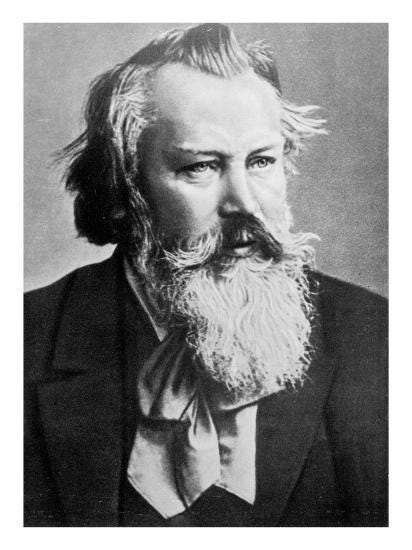
Like so many compositions throughout his life, Brahms was incredibly critical of his three violin sonatas. He composed his first one as early as 1853, and it is possible that he composed four more, all of which he destroyed. In 1879 he would finally write and publish what would become his Violin Sonata in G Major, Op. 78. Seven years later, in 1886, Brahms would write his second sonata, which is in A Major, Op. 100, and just two years later, his final violin sonata, written in D minor, Op. 108.

All three sonatas were written for the violinist, Joseph Joachim, arguably the most influential violinist of the second half of the nineteenth century. The first sonata was written soon after Brahms had completed his violin concerto, which he had also written for Joachim, and there is a similar mood in both. The same general character also pervades the second sonata, even though it was written seven years later. The final sonata, however, bears no resemblance at all to the first two. It is considerably longer than the other two, containing four movements to their three, and its general scope is also much broader.

The three sonatas are almost always put together on one recording and they do offer a wonderful glimpse into Brahms’ progression as a composer, and for his ability to write for the two instruments as a pair. More so than any violin sonata written before, Brahms achieves a true synthesis in sound between the two instruments. One never truly dominates the other, but they constantly work in tandem to create a beautifully unified whole.
We have been blessed with many fine recordings of these sonatas over the years, and while I don’t want to be overly simplistic in my categorization, there are generally two types of approaches to these sonatas: introverted and extroverted. There are persuasive and landmark recordings from both approaches that I cherish. And when I say introverted, I don’t mean timid. When I say extroverted, I don’t mean gauche!
Here are my favorite performances.
